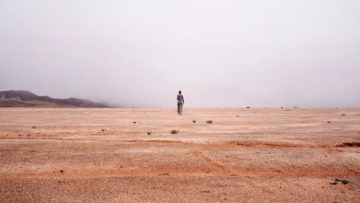Zack Savitsky in Quanta Magazine:
 In 2017, a team of scientists from Germany trekked to Chile to investigate how living organisms sculpt the face of the Earth. A local ranger guided them through Pan de Azúcar, a roughly 150-square-mile national park on the southern coast of the Atacama Desert, which is often described as the driest place on Earth. They found themselves in a flat, gravelly wasteland interrupted by occasional hills, where hairy cacti reached their arms toward a sky that never rained. The ground under their feet formed a checkerboard, with irregular patches of dark pebbles sitting between lighter ones as bleached as bone.
In 2017, a team of scientists from Germany trekked to Chile to investigate how living organisms sculpt the face of the Earth. A local ranger guided them through Pan de Azúcar, a roughly 150-square-mile national park on the southern coast of the Atacama Desert, which is often described as the driest place on Earth. They found themselves in a flat, gravelly wasteland interrupted by occasional hills, where hairy cacti reached their arms toward a sky that never rained. The ground under their feet formed a checkerboard, with irregular patches of dark pebbles sitting between lighter ones as bleached as bone.
Initially, the black patches speckling the desert surface didn’t interest group leader Burkhard Büdel, a veteran biologist who had spent the last several decades scraping deserts on all seven continents for signs of life. Discolorations like these, known as desert varnish, are ubiquitous and routinely signify deposits of manganese or other minerals. Keep moving, he instructed his teammates.
But his graduate student Patrick Jung couldn’t get the checkerboard out of his head. Having spotted what looked like lichens on some of the dark pebbles, Jung suspected that something more might inhabit them. Eventually, he picked up a rock, dribbled some water on it from a bottle, and peered at it through his handheld magnifying lens. The face of the black stone erupted with green. The rubble had come alive.
More here.
